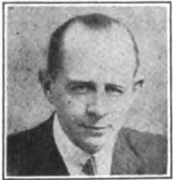This is an excerpt from a letter written by A.A. Wyn in defence of the pulp magazines. It appeared in the New York Times, 04 Sep 1935, and was written in response to a snooty editorial that put down the fiction published in the pulps.
For your information, here are some facts about the pulps.
There are approximately 125 pulp magazines published every month, buying upward of 35,000 tons of paper a year at a cost of approximately $1,500,000.
More than 2,000,000 worth of printing a year.
Approximately $250,000 worth of art work, and another $250,000 of photo engraving a year.
More than 100,000,000 words a year at a cost of more than $1,500,000.
The pulp industry contributes to the support of:
The United States Post Office (of the manuscripts that come In, approximately 1 per cent are usable, so that some 10,000,000,000 words of manuscript make a round trip, and manuscript postage runs high!).
Typewriter and typewriter ribbon industries; ink manufacturers; the glue and wire industry (both of them latter are used in binding magazines).
Mail-order advertisers.
Railroads—2,000 carloads of magazines go out every year and 2,000 car loads of paper come in every year. And it takes approximately five carloads of raw materials to make one carload of paper.
National -distributers, wholesalers and dealers of magazines.
Second-hand magazine stores, the Salvation Army, which collects and sells old Issues; waste paper dealers.
Writer's magazines, literary agents and services.
“The story’s the thing”—so must the prehistoric savages in their caves have told some glib story-teller relating his adventures with man and beast in the wilderness when his ingenuity ran dry.
Today, “the story’s the thing” in the pulp magazines, and 30,000,000 Americans can’t be wrong.


